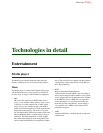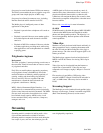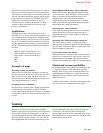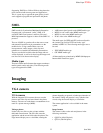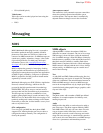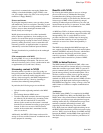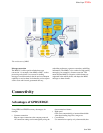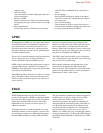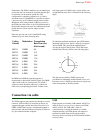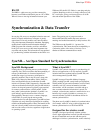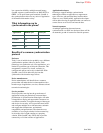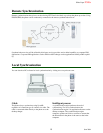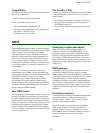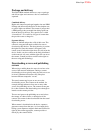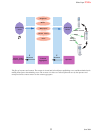
White Paper
Z500a
15 June 2004
reducing costs.
• WAP over GPRS
Access the Internet via WAP at high speed and with a
constant connection.
• Email over GPRS
Remain connected to an email system while reading
and preparing messages, (which are then sent at high
speed).
• Data communication
Transfer data and access the Internet or an intranet
with a PC, PDA or handheld device connected via
cable.
• Provide settings
Receive GPRS configuration settings from the pro-
vider OTA (over the air), making manual configura-
tion unnecessary.
• User-controlled settings
Take advantage of full user control in the data con-
nections menu, establishing multiple descriptions and
accessing advanced settings for GPRS.
GPRS
The introduction of GPRS was a big step in the evolution
of the GSM networks for enhancing the capabilities of
data communication. Data traffic has increased (over
both wired and wireless networks), with the growth in
demand for Internet access and services paralleling that
of mobile communications.
We can now see that the demand for high-speed Internet
access is the key driver for coming generations of
wireless multimedia and entertainment services.
GPRS is able to take advantage of the global coverage of
existing GSM networks. Applications developed for
GPRS have been deployed on a large scale and have thus
reaped the associated benefits.
With GPRS, the Z500a sends data in “packets” at a high
speed. The Z500a remains connected to the network at
all times, using transmission capacity only when data is
sent or received.
Instead of occupying an entire voice channel for the
duration of a data session, the Z500a sends and receives
data in small packets, as needed, much like IP on the
Internet. Thanks to this, the phone is always online, using
transmission capacity only when data is sent or received.
The phone is compatible with GPRS R99.
The GSM system limits the ability to use all eight time
slots, so the phone uses up to four time slots for receiving
data, and one slot for transmitting.
Phone identity information and characteristics of the
connection are described in the PDP (Packet Data
Protocol) context. This information is stored both in the
phone and in the mobile network, so that each phone is
identified and “visible” to the system.
EDGE
EDGE (Enhanced Data rates for Global Evolution)
provides all the benefits of GPRS at significantly higher
data rates and enables feature-rich services that require
higher data rates than GPRS can deliver. The added
bandwidth can also be used to increase capacity for
additional customers.
The higher data rates are achieved with the use of new
modulation schemes on the air interface. Several of the
new modulation schemes use 8-PSK modulation rather
than the GMSK modulation used by GSM and GPRS.
The new modulation schemes may require an upgrade to
the RF hardware in all base stations and new mobile
stations such as the Z500a. In addition, new re-
transmission procedures and packet data channels are
introduced with the associated signaling. The Z500a is a
class B mobile station meaning it can monitor circuit
switched and packet switched services simultaneously
but can utilize only one of the services at a time. In
addition, it is 8-PSK power class 2 meaning the nominal
maximum output power is 27 dBm in the GSM 850 band
and 26 dBm in the GSM 1800 or 1900 bands (see 3GPP
TS45.005).




